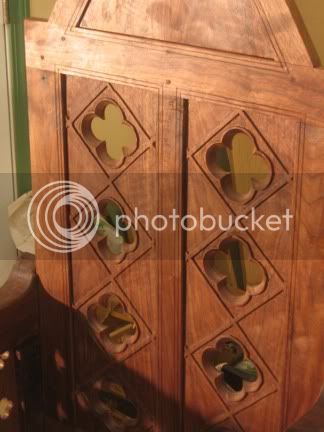condeesteso
Established Member
Still working on this, but based on a budget marking gauge (in my case Wickes, about £7, beech, plastic lock screw...). I started by removing the pin and just cutting a slit in the end to take a 2mm blade (some steel I had around, which might be off a nasty v cheap plane), and using a screw threaded straight into the beech to lock the blade - one of those screws that fixes switch-plates to the wall.
That established that I was heading where I wanted. Next a new bar (proper name please?), beech again, with thin kerf 1mm (for ex bandsaw blades).
And a longer fence - happens to be oak, just what was around (the moulding was already on it, way too soon to make this pretty!)
Next steps:, the fence is too deep, the length helps but depth doesn't, especially if you want to hold the stock in a vice. Also the depth of fence is a bit irelevant as 'square' is how well you set (make, even) the blade, and that is quite variable. In practice, if one side cuts deeper than the other, I'll probably look at adjusting the blade relative to the stock - taps etc, like an old plane.
For narrower beads I need one like Garrett Hack's on his video, so I should end up with one pair. In the end I'll try and make them pretty - but not till they work for me first.
Any hot tips and tune ups please - most of this has been guesswork and looking at articles etc. I'm happy a really cheap marking gauge is a good starting point for what I wanted though.
That established that I was heading where I wanted. Next a new bar (proper name please?), beech again, with thin kerf 1mm (for ex bandsaw blades).
And a longer fence - happens to be oak, just what was around (the moulding was already on it, way too soon to make this pretty!)
Next steps:, the fence is too deep, the length helps but depth doesn't, especially if you want to hold the stock in a vice. Also the depth of fence is a bit irelevant as 'square' is how well you set (make, even) the blade, and that is quite variable. In practice, if one side cuts deeper than the other, I'll probably look at adjusting the blade relative to the stock - taps etc, like an old plane.
For narrower beads I need one like Garrett Hack's on his video, so I should end up with one pair. In the end I'll try and make them pretty - but not till they work for me first.
Any hot tips and tune ups please - most of this has been guesswork and looking at articles etc. I'm happy a really cheap marking gauge is a good starting point for what I wanted though.
















